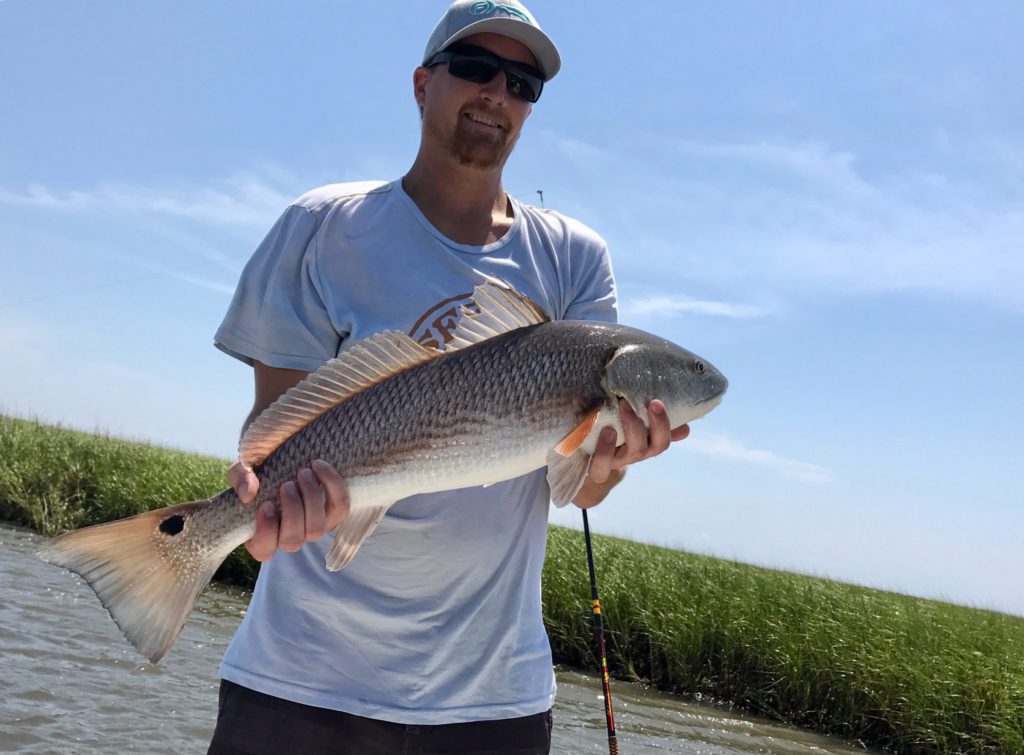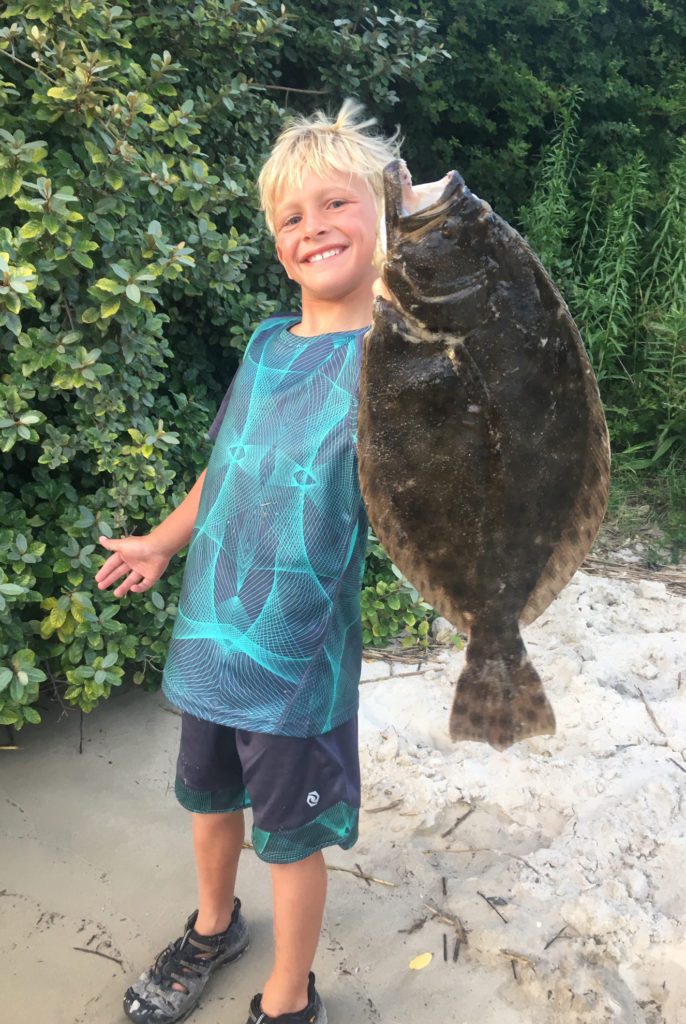Carolina Beach – July 20, 2017
Red, of Island Tackle and Hardware, reports that anglers fishing inshore are catching limits of keeper flounder in creeks off the waterway, as well as on docks in the waterway and in the Cape Fear River. Fishing a live pogie pinned on a Carolina rig has been working best. When fishing around area docks and bridges, dropping live fiddler crabs has produced sheepshead in the 2-5 lb. range, with a few fish pushing the 7 lb. mark.
On the flats and in the shallow water creeks, anglers are picking up good numbers of redfish and speckled trout. Mud minnows on a Carolina rig have worked best for reds, and live shrimp under a float rig has worked best for the specks. Fishing early in the morning has been the key to hooking higher numbers of both species.
Trolling Clarkspoons nearshore has produced solid catches of spanish and bonita. Some of the spanish have pushed the 3-4 lb. mark. Pulling small Yo-Zuri diving plugs has worked better on the larger spanish.
Out to the 10 mile mark, kings are feeding well. They’re willing to take live menhaden and trolled cigar minnows. Big Nic Mac-a-Hoos have also worked well on the kings.
In the 25+ mile range, some bailer dolphin have been caught, as well as a few blackfin tuna.

Scott Strickland, of Carolina Beach, NC, with a 28″ red drum caught and released in the lower Cape Fear River. The fish fell for a live finger mullet on a Carolina rig.
Christian, of Seahawk Inshore Fishing Charters, reports that those focusing on redfish have been successful in landing double digit numbers most days. Targeting shell beds and drop-offs with live mud minnows and scented soft plastics (like Z-Man baits) have worked best. Most of the reds have been in the 17-21” range.
Speckled trout have been mixed in with the reds. Some trout have pushed the 20” mark, and they’re steadily taking a live minnow or soft plastic worked on the bottom. Flounder are also in the same areas as the reds and trout. The flounder have been a mix of under-sized and keeper fish.
Around slack tide, the sheepshead have been feeding well around dock structure. Dropping live fiddler crabs has produced the best numbers of fish. There are also schools of bluefish and ladyfish feeding on top in the middle of the river on calmer days.
Greg, of TopWater Guide Co., reports that the flounder bite has continued to improve in the waterway and Cape Fear River around dock structure. Drift fishing down dock lines has accounted for the highest number of flounder landed, and fishing finger mullet or mud minnows on Carolina rigs has been the best method. Most fish have been in the 14-18” range and have been holding in 4-8′ of water.
The redfish bite has stayed steady. In the early morning hours, topwater plugs worked close to grass lines in the shallow flats are producing upper-slot reds. On days where the wind lays out, anglers are having success fishing the flats. During the middle of the day, though, dock fishing is still the best way to catch numbers of fish. Fishing live mud minnows on Carolina rigs has been the ticket.
Speckled trout are around and feeding in the river. Working marsh lines near the higher part of the tide and around docks near deeper holes and pockets has been the best recipe for landing specks. Live shrimp is the best way to hook limits of fish, but soft plastics rigged on a 1/8 oz. jig head will work, too.
Rod, of OnMyWay Charters, reports that trolling for spanish in the nearshore waters has still been producing double digit days for those trolling Clarkspoons. Out in the 18-25 mile range, kings are feeding well. High numbers of fish in the 6-15 lb. class have been landed while slow trolling live or dead baits. Targeting bait pods and ledges has been the key to dialing in on the kings.
Plenty of large (8-10”) pogies have been holding in the waterway and in the Carolina Beach boat basin to catch and use for bait for the kings.
In the 25-35 mile range, anglers dropping to the bottom have landed good numbers of black sea bass, beeliners, pink snapper, triggerfish, grunts, and gag grouper. Bottom fishing in the 35+ mile range has produced larger scamp and red grouper.

Matthew Davis with his first keeper flounder. The flatfish took a finger mullet on a Carolina rig in the Carolina Beach ICW.
Jesse, of Ocean Stinger Fishing Charters, reports that out at the Gulf Stream, the mahi and blackfin tuna have been the name of the game. Trolling smaller ballyhoo on small Ilander skirt rigs in the 55+ mile range around temperature breaks has been the key to finding good concentrations of fish. The best color skirts for mahi have been blue/white, black/purple, and green. Pulling small skirt rigs on the shotgun and long outrigger set-ups have provided most of the blackfin action.
In the 30-45 mile range, kings and mahi are feeding well. Kings have bit best on skirt-rigged ballyhoo set on the planer rods. The mahi have preferred small ballyhoo on skirt rigs. Focusing on current lines has been the key to finding large amounts of bait, and subsequently mahi, in this range.
Nearshore, trolling #00 Clarkspoons 1-5 miles off the beach has produced plenty of spanish and bonita.
Chandler, of Kure Beach Pier, reports that anglers tossing live baits from the pier are connecting with flounder (between 14-16”). Those working Gotcha plugs in the morning have landed good numbers of bluefish in the 1-3 lb. range.
In the evening and into the night, fishing fresh shrimp on the bottom has rewarded anglers with croaker and whiting.
Freddy, of Carolina Beach Pier, reports that sea mullet and black drum have been feeding near the pier, and fishing fresh shrimp on bottom rigs has been the key to landing both species.
Bluefish and spanish have also been hanging nearby in the early morning and evening hours. Casting Gotcha plugs and Stingsilvers has been the key to landing high numbers of these fish.
